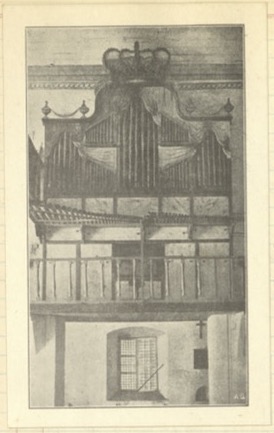Temp: Max. 89 Min. 72
Cousin Frances called for us at 9 a.m. to drive to Cavite, a distance of 21 miles. We passed thru 3 native villages en route –the smells in these villages were terrible and the dust on the road was so bad one could hardly breathe. The homes, or nipa shacks as they are called, were the frailest sort of structure stuck upon poles and underneath was the few chickens, hogs, dogs or other animals that the owner might have. There was good evidence of the family wash at each house and in a way the people seemed to strive towards cleanliness, such as the front yard being swept clean and the house in order in general. The beasts of burden were carabaos and small horses. Took Bill to the Navy Yard in Cavite and then drove around to Sangley Point to see Mrs. Yates. She was not home, so went back for Bill. On the road between Manila and Cavite there is an old mission at which we stopped to see the famous bamboo organ and heard it played.
In the afternoon we drove to the Governor’s palace (Mascalang [Malacañan] Palace) to get my passport. It was suggested that Bill and I get a passport together and therefore had to first get our pictures taken together. Found an old and smelly place on the escolar and had a very good looking picture taken.

Powered By EmbedPress
